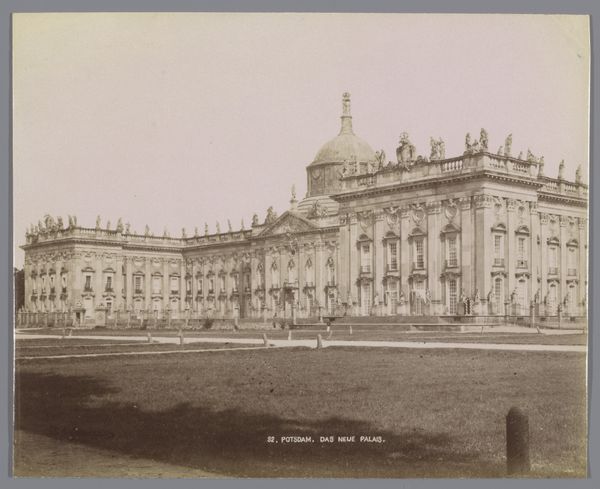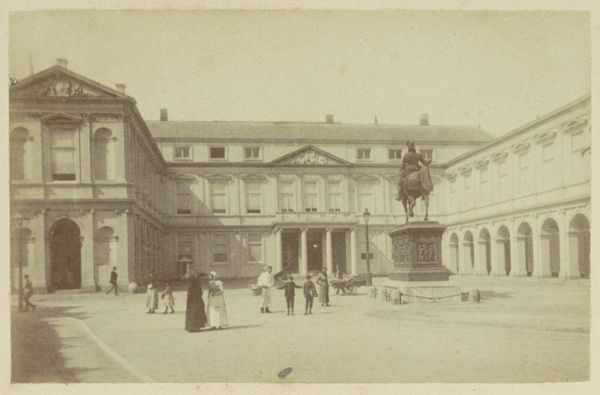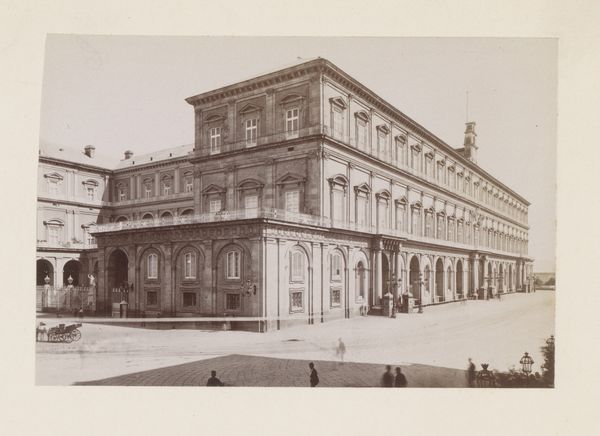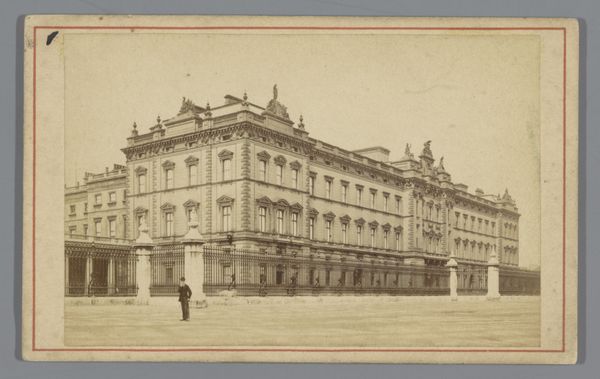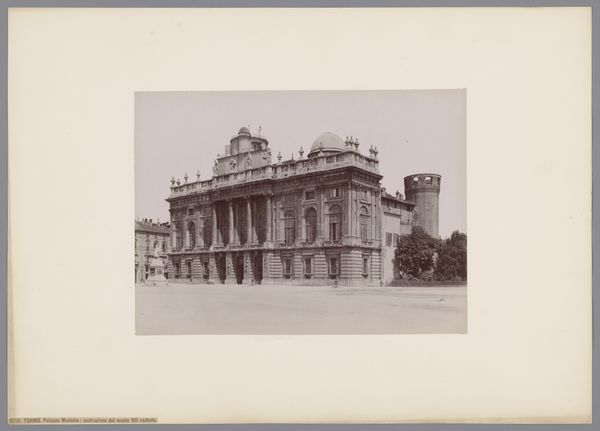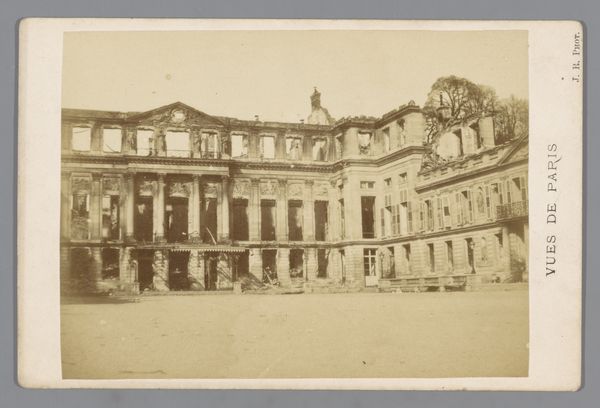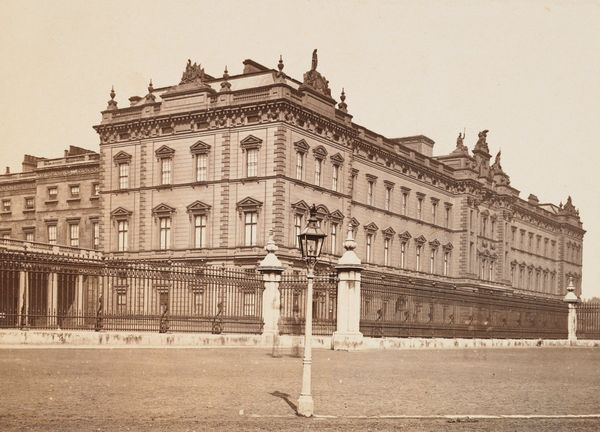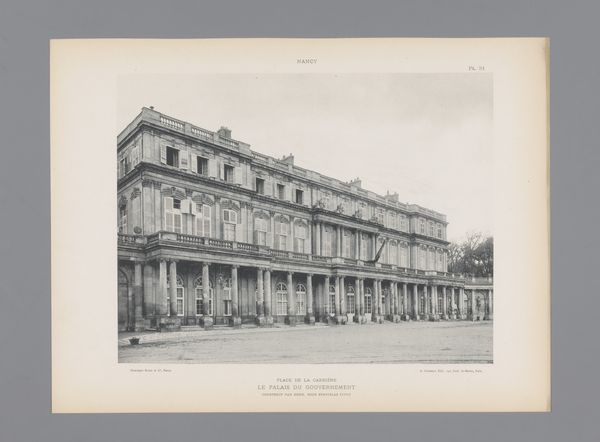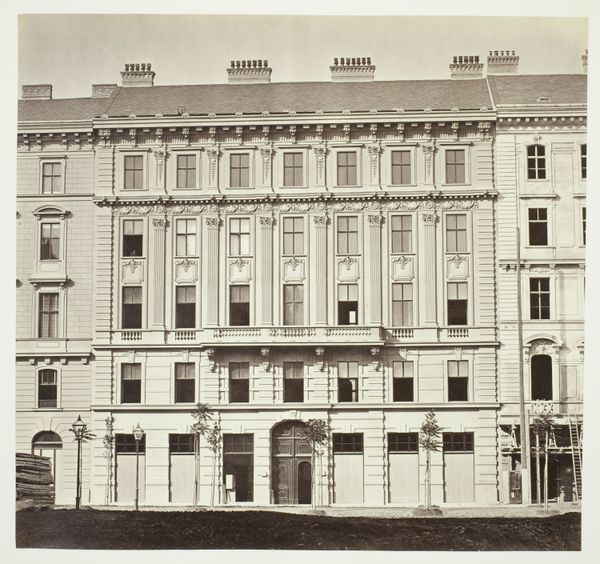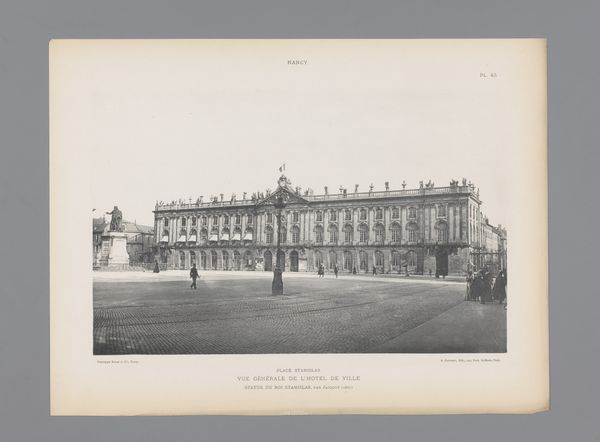
photography, architecture
#
portrait
#
photography
#
cityscape
#
architecture
#
realism
Dimensions: height 288 mm, width 221 mm
Copyright: Rijks Museum: Open Domain
Curator: Looking at this print, it seems the symmetry creates a very stern and formal facade. What strikes you most immediately about it? Editor: It's undeniably grand and imposing. It whispers of empire, privilege, and power, particularly in its hyper-regimented presentation. Curator: Indeed. This photographic print by Hermann Heid shows a "Façade van een gebouw in Wenen, Oostenrijk" or Façade of a building in Vienna, Austria. The image was captured sometime between 1865 and 1891. The scale and the architectural detail... it's almost overwhelming. Editor: I notice a tension between the cool, almost sterile orderliness and the visible decay on the building's facade, which becomes evident once you spend time absorbing its textural and historical details. There’s a trace of the ghostly, almost palimpsestic element present on its surface. What stories do you think the building tells, not just architecturally, but politically and socially? Curator: Vienna, in this period, was a crucible of culture and a hotbed of political tensions, especially surrounding issues of national identity within the Austro-Hungarian empire. Architecture was very much tied to signaling dominance. Looking at this meticulously constructed image, the intent seems clear: project stability and might. It speaks to the architectural forms and representational languages empires deploy, as the seat of their authority and sovereignty. Editor: That tension between image and reality is potent here. Even in this carefully composed photograph, we see cracks in the façade, literally. How do we read that visually? As resistance, a memento mori, or merely the inevitable crumbling of even the grandest ambitions? I am interested in this almost inevitable disintegration—the return of everything into the dust of history—as opposed to such calculated representation of the power. Curator: It raises pertinent questions about how the material and symbolic meet—where power confronts fragility, even oblivion. The way photography, a relatively new medium at the time, attempts to capture and preserve these monumental structures also contributes to the complexity of reading such a print. It also illuminates the paradox of capturing that fleeting instant of preservation while acknowledging the entropic fate of physical existence. Editor: Heid’s photograph serves as a stark visual meditation on enduring presence, a critical inquiry of an empire at its perceived zenith. Thank you for shedding light on these critical points. Curator: My pleasure.
Comments
No comments
Be the first to comment and join the conversation on the ultimate creative platform.

